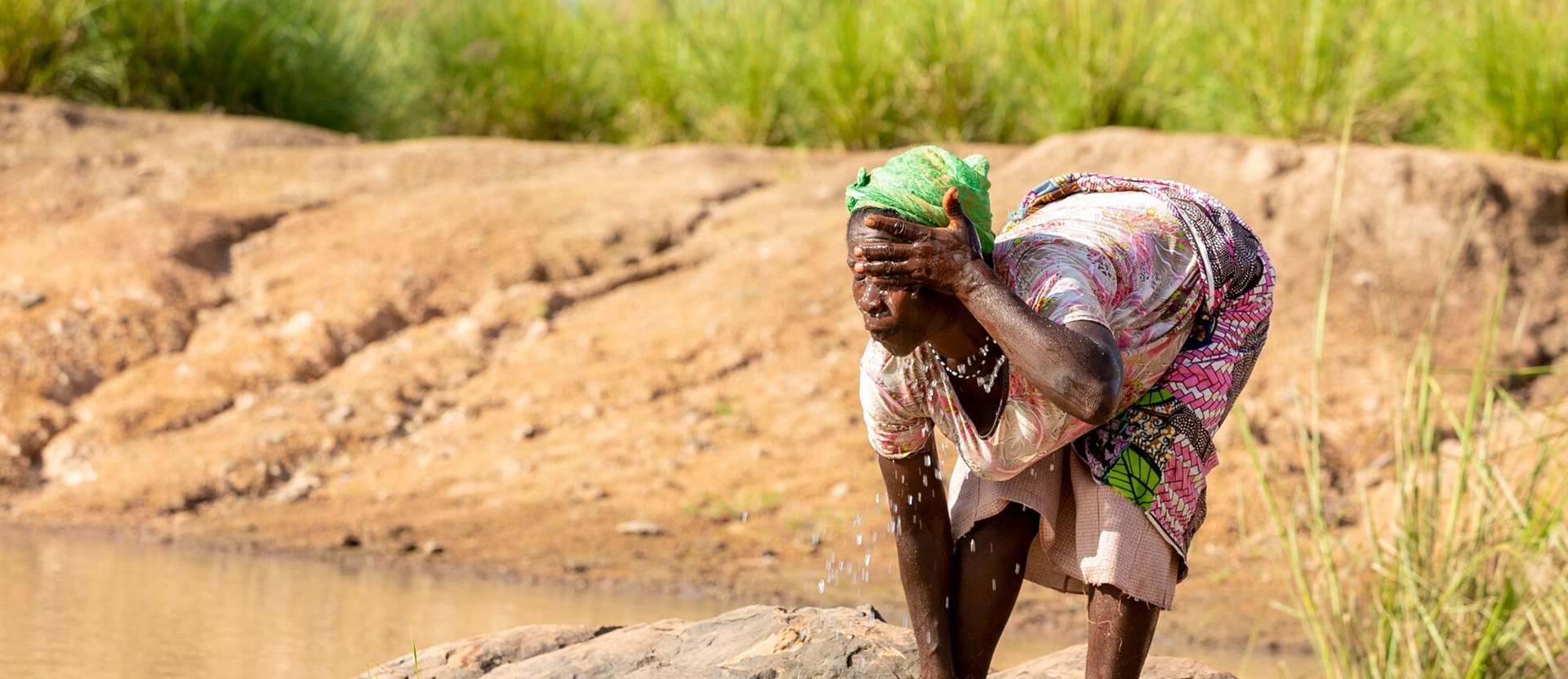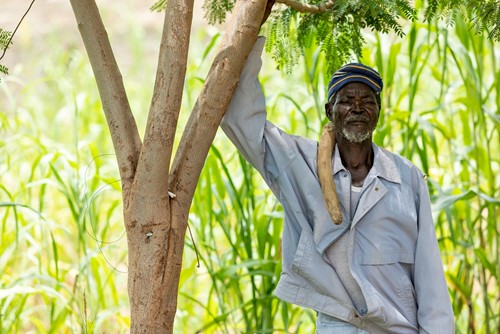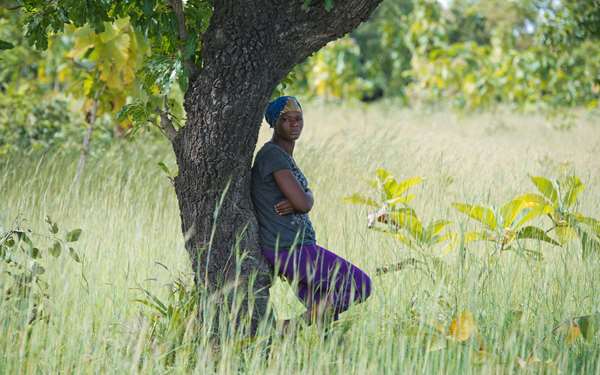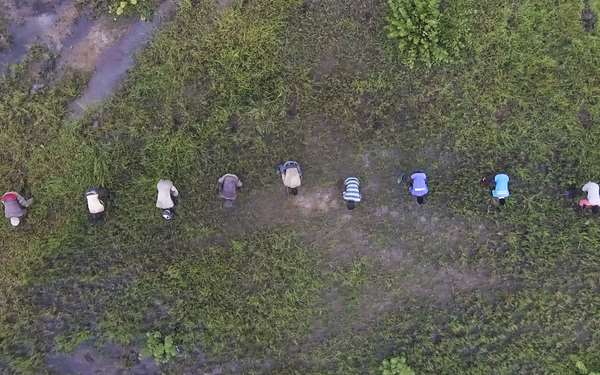
How can trees tackle heatwaves?
Learn why we're growing trees with communities to tackle extreme heat in Africa's drylandsFinding relief from the heat is a top priority for many of us in Europe and the UK right now, as we grapple with the effects of this summer’s scorching heatwave.
As temperatures rise from year-to-year, many of us are realizing that our environments are not well-suited to tackling the effects of the climate-crisis – particularly those in cities. In urban areas, pavements and concrete, combined with an absence of trees, form sweltering ‘heat islands’ with little opportunity for respite.
In the drylands of Africa where Tree Aid work, temperatures like those we're currently experiencing (and higher) are a daily reality. Temperatures rose by nearly 1°C in the 30 years from 1970, almost twice the global average, and the region now regularly sees temperatures of +40°C, almost 10°C higher than in the UK.
With climate shocks like these set to increase in this region in the coming years, these communities find themselves asking the same question – how can we adapt our environment to reduce the impact of rising temperatures?
Contents:
- Learn how trees are a nature-based solution to help reduce temperatures
- Find out why temperatures are hotter than the global average in the areas we work
- Learn how our work with trees is tackling other issues, like land degradation and reduced rainfall
- And discover how the Great Green Wall is helping to hold back the desert and re-cool the Sahel
Growing trees – a nature-based solution:
Around the world, growing trees offers us a solution to mitigate against the effects of the climate crisis, whilst tackling the cause by capturing carbon dioxide too. Tree Aid works with dryland communities both to grow new trees, and tackle the root causes of deforestation. Trees are a ‘nature-based’ solution to heatwaves – meaning that they’re affordable, environmentally sustainable, and easy to scale-up. Their canopies provide shade from the burning sun and a place for people shelter during the working day.

“The trees provide a lot of shade especially when we work and we are tired we have to sit down. So now that we are losing a lot of our tree cover it is affecting us” – Abba Achana
A tree’s natural process of transpiration has a cooling effect too; when water vapour is released through a tree’s leaves, it takes heat energy from the surrounding environment for evaporation, lowering the surrounding temperature.
“Trees help the environment, so that always it will be cool. We will get rains if there are trees in our areas” – Solomon Awusagajo
What’s more, increasing an area’s forest cover also increases the likelihood of rainfall – community members across the Sahel have noted more precipitation following tree-growing work in their area:
“In terms of climate change, we see that for the past few years we have been protecting a lot of our trees and people are no longer cutting our trees and this is also helping us to get good rains now than before” - Kateero Diyedani
Why are temperatures so hot in the Sahel?
The Sahel region where Tree Aid works is located in sub-Saharan Africa. The climate here is notoriously hot and arid. Though annual rainfall does not differ drastically to some areas of Europe, it falls in a concentrated rainy season – from May to September. Without dedicated methods of conserving this water, it often evaporates or runs straight into rivers, leading to exacerbated droughts in the dry season and little humidity.
This lack of humidity is worsened by widespread poverty in the region – which has led to destructive environmental practices like over-grazing and deforestation. Though the areas where Tree Aid work do not have the same ‘heat island’ causes of cities (ie concrete and buildings), the heat reflected from bare, tree-less land can be just as impactful – studies have found that ‘green spaces’ without trees can be even warmer than built-up areas.
This, combined with the wider impact of the climate crisis, is reducing rainfall, and means communities have less shady places to shelter from the heat of the sun.


The cost of heatwaves – more than discomfort:
Rising temperatures in the Sahel are doing more than simply making life uncomfortable for the people who live there. When left uncovered by the canopies of trees, the scorching sun and lack of rain can have a devastating impact on people’s livelihoods. In recent years, many livestock animals have died due to extreme heat and a lack of shade and water. Likewise, land left exposed to the sun quickly dries out and becomes degraded, leading to a process called ‘desertification’ where valuable topsoil loses its fertility.
Fortunately, the benefits of trees go far beyond just providing shade to people. Trees shade the land too, whilst their strong roots hold soil in place. Their branches help shelter the land from strong winds and their canopies provide shelter for animals and mean that, when the rains do arrive, they fall on sheltered ground, reducing run-off and conserving water.
Cooling the continent: the Great Green Wall
The Great Green Wall is one of the most urgent movements of our time. This African-led movement has an epic ambition to grow a wide belt of trees, vegetation and fertile land across the continent.
Originally envisaged as an 8,000km band of trees, this ambitious project is now much more than that, and its outcomes will be key to cooling the continent in the face of rising global temperature.
All of Tree Aid's work contributes towards the Great Green Wall, and our projects are designed not simply to grow more trees, but to tackle poverty, diet-related ill health, desertification and the impacts of the climate crisis too.



